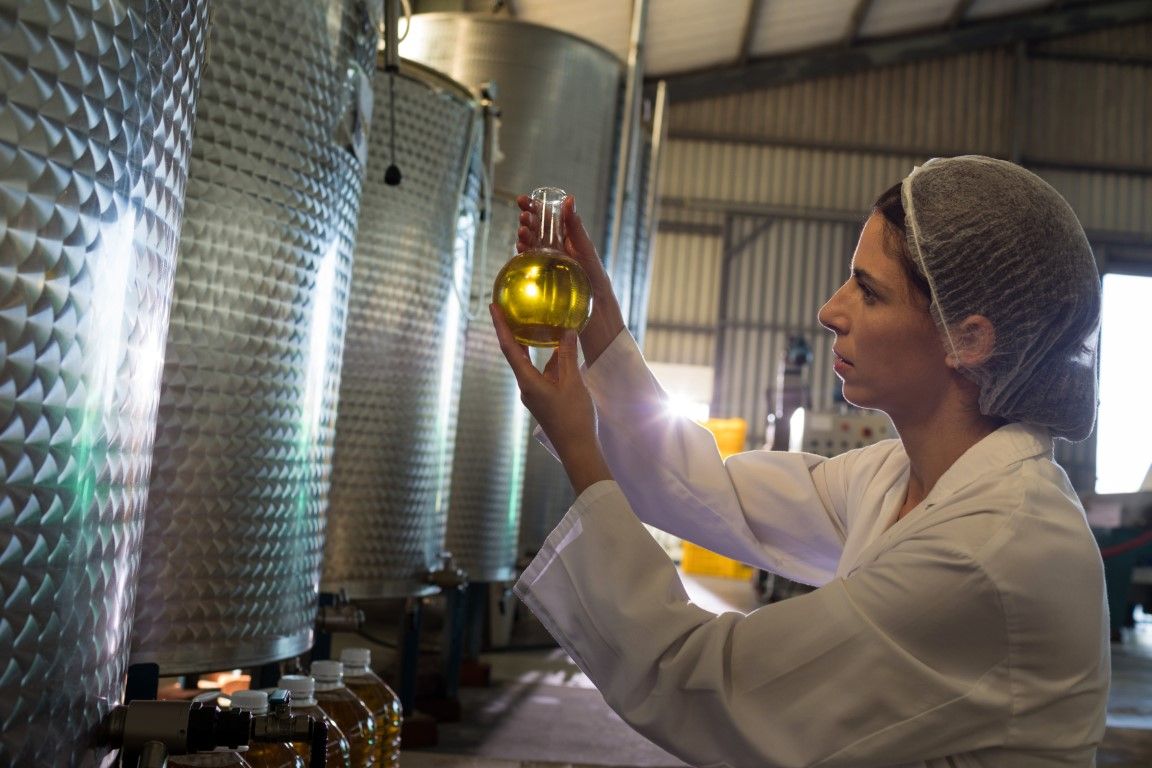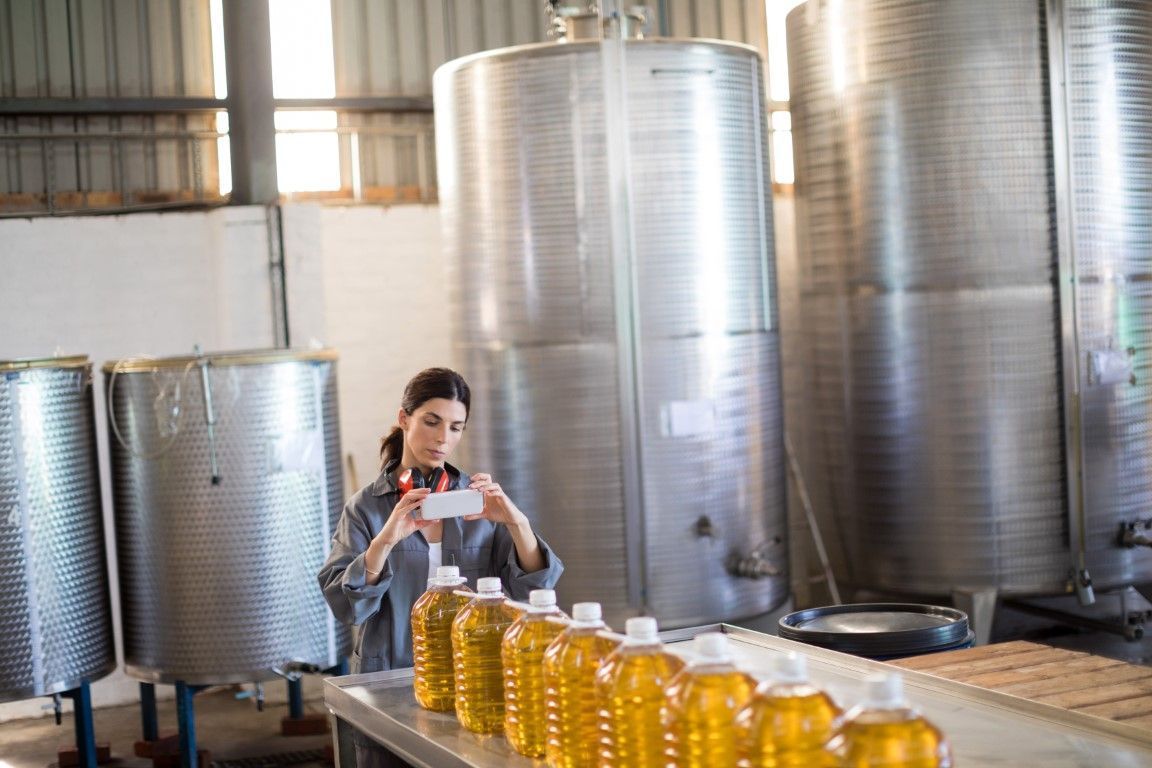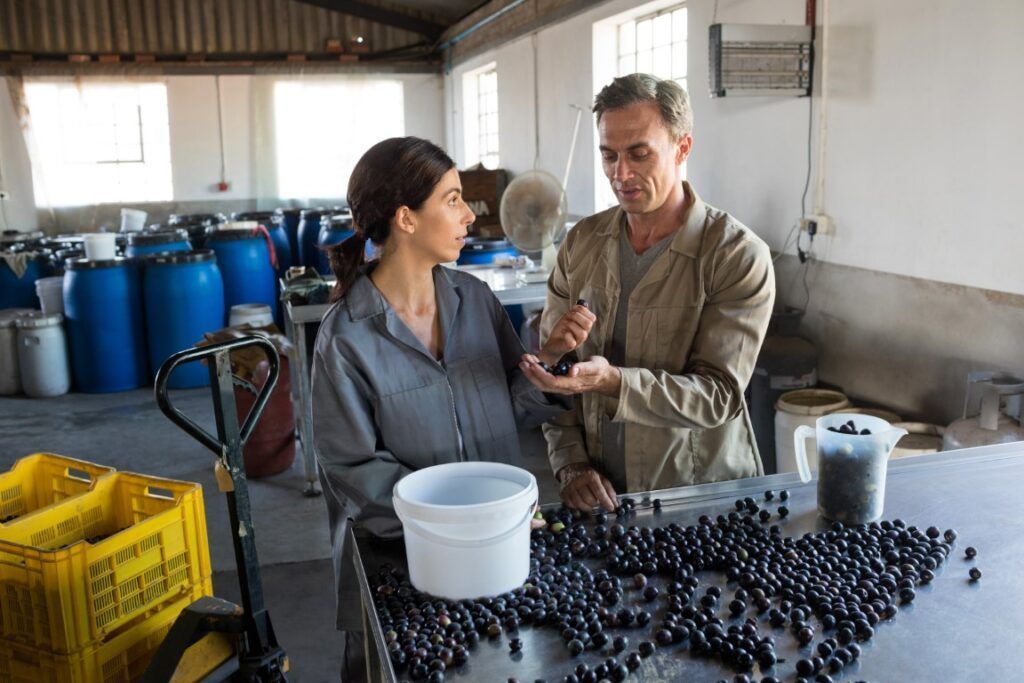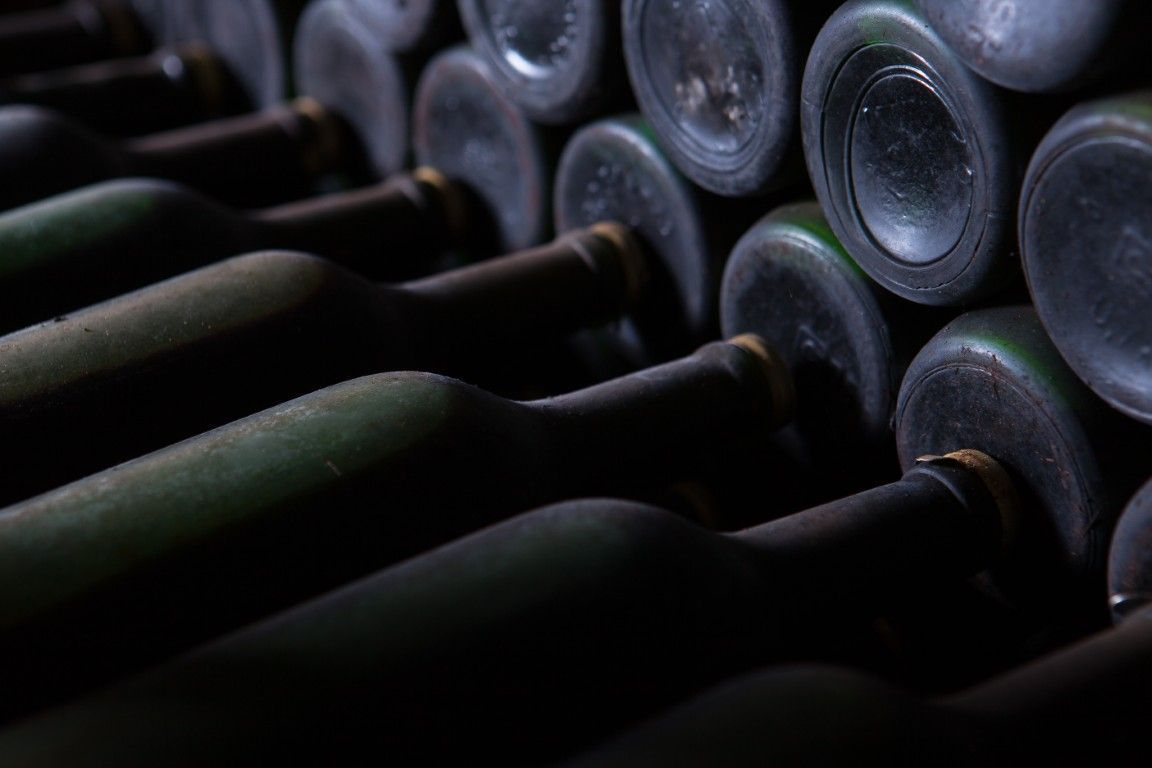Olive oil is an essential product in the Mediterranean diet, valued not only for its flavor and versatility but also for its health benefits. Its production process, from harvesting the olives to bottling, is an art that requires precision and care to ensure maximum quality. In this article, we will explain in detail how this “liquid gold” is produced, the extraction methods used, and the differences in types of olive oil according to their production process.
What is Olive Oil and Why is it So Valued?
Olive oil is a vegetable oil obtained from olives, the fruit of the olive tree, a tree typical of Mediterranean regions. Its high content of monounsaturated fatty acids and antioxidants makes it a healthy and nutritious option, capable of reducing the risk of cardiovascular diseases and improving cognitive function. Additionally, its organoleptic properties—flavor, aroma, and texture—make it an essential ingredient in cooking and cosmetics production.
Olive Oil Production Process
The olive oil production process involves several stages that must be followed rigorously to maintain product quality. Below are the essential phases of this process.
How is Olive Oil Made? Main Stages of the Process
Making olive oil involves various stages, each playing a fundamental role in ensuring a high-quality product.
Olive Harvesting: The First Step
Olive harvesting takes place in autumn when the fruit has reached maturity. Different harvesting methods, such as hand-picking and mechanical harvesting, ensure that the olives are removed without damage. The harvest timing is crucial, as the oil’s characteristics will depend on the fruit’s ripeness.
Transport and Cleaning of Olives at the Factory
Once harvested, the olives are transported to the olive oil factory, where they are cleaned. At this stage, impurities such as branches, leaves, and dust are removed, ensuring the fruit is in optimal condition for the extraction process.
Grinding and Malaxing the Olive Paste
Grinding involves crushing the olives to form a homogeneous paste. Then, the paste is malaxed, allowing small oil droplets to combine, facilitating subsequent extraction. The temperature at this stage is carefully controlled to prevent heat from degrading the oil’s quality.
Separation and Extraction of the Oil
Once malaxed, the paste is passed through a centrifugation or pressing system that separates the oil from water and solids (skin and olive pit). This process can be performed cold or hot, depending on the type of oil desired.
Filtering and Bottling of Olive Oil
Finally, the oil is filtered to remove impurities and achieve a clean, bright product. Once filtered, the oil is stored in stainless steel tanks and later bottled for commercialization.

What Extraction Methods are Used in Olive Oil Production?
There are two main extraction methods for olive oil: cold and hot, each with its particularities and advantages.
Cold Extraction vs. Hot Extraction
Cold extraction is carried out at a temperature below 27°C, which better preserves the oil’s organoleptic and nutritional properties. In contrast, hot extraction involves higher temperatures, speeding up the process but slightly compromising the final product’s quality.
Advantages and Quality Differences Between Both Methods
Extra virgin olive oil is typically produced through cold extraction, ensuring superior flavor and aroma. On the other hand, olive oil obtained through hot extraction is more economical to produce, though its quality may be affected. However, both methods meet the necessary quality standards for commercialization.
Olive Oil Production Process in Factories
The olive oil factory is where all the described processes take place, from receiving the olives to bottling the final product. Technological advancements have allowed many of these phases to be automated and optimized, contributing to more efficient and sustainable production. Modern factories have quality control systems that ensure every bottle meets established standards, from aroma to acidity.
Types of Olive Oil According to the Production Process
Depending on the production process, there are different types of olive oil on the market, each with unique characteristics.
Extra Virgin Olive Oil: The Most Carefully Produced Oil
Extra virgin olive oil is the purest and highest quality oil. It is obtained from the cold extraction of fresh olives without any refining processes. This allows it to retain all its beneficial properties and unmistakable flavor, ideal for consuming raw.
Virgin and Refined Olive Oil: Differences in Production
Virgin olive oil is similar to extra virgin but has slightly higher acidity. Refined olive oil, on the other hand, undergoes chemical and thermal processes to neutralize its flavor and aroma, resulting in a smoother product with fewer beneficial properties.
What is Pomace Oil and How is it Produced?
Pomace oil is obtained from the solid residues of olives (pomace) left after virgin oil extraction. This type of oil undergoes refining and is blended with virgin olive oil to make it suitable for consumption, although its quality is inferior compared to other types of oil.

Frequently Asked Questions About Olive Oil Production
How Long Does the Olive Oil Production Process Take?
The production time can vary depending on the extraction method and the volume of olives processed. However, a complete cycle, from harvesting to bottling, can take several days to a week.
What is the Difference Between Extra Virgin Olive Oil and Refined Olive Oil?
The main difference lies in the production process and the quality of the final product. Extra virgin olive oil is obtained directly from the fruit, while refined oil undergoes additional processes to neutralize its flavor.
What Factors Influence Olive Oil Quality?
Several factors can influence oil quality, including the olive variety, harvest timing, extraction method, and storage. The olive oil factory plays a crucial role, as precise control at each stage ensures a high-quality product.
How is Olive Oil Purity Guaranteed in Factories?
Olive oil factories use laboratory analysis to measure acidity, polyphenol content, and other quality parameters. They also follow strict hygiene and traceability protocols to ensure the product meets purity standards.
What Are the Benefits of Cold Extraction for Olive Oil?
Cold extraction better preserves the oil’s antioxidants and essential fatty acids, offering greater health benefits. It also results in a more intense flavor and aroma, ideal for the most discerning palates.
At Excellent Cork, we understand the importance of choosing the right materials to preserve the quality of each product. While our specialty is manufacturing synthetic stoppers for the wine and spirits industry, we share with olive oil producers a commitment to quality and innovation, ensuring that every detail in the packaging process is optimal.





